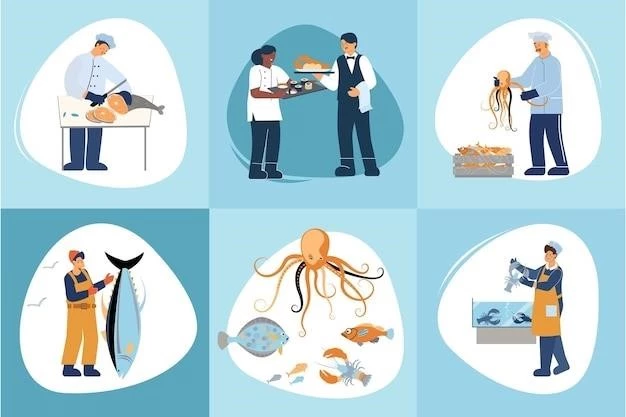Introduction
Diarrhetic shellfish poisoning (DSP) is a gastrointestinal illness caused by consuming shellfish contaminated with toxins produced by marine algae. This article describes the syndrome and the toxins associated with it in more detail.
Description of Diarrhetic Shellfish Poisoning (DSP)
Diarrhetic shellfish poisoning (DSP) is a gastrointestinal illness caused by consuming shellfish contaminated with toxins produced by marine algae. The syndrome presents with symptoms such as diarrhea, nausea, vomiting, and abdominal pain, typically occurring within a few hours of ingesting the contaminated shellfish. It is essential to be aware of the risks associated with consuming shellfish in order to prevent and manage DSP effectively.
Causes of DSP
Diarrhetic shellfish poisoning (DSP) is primarily caused by the consumption of shellfish contaminated with toxins such as okadaic acid and dinophysistoxins produced by specific marine algae species. These toxins accumulate in filter-feeding bivalve mollusks like mussels, clams, and oysters, leading to gastrointestinal symptoms when ingested by humans. Understanding the sources of contamination and the algae responsible for toxin production is crucial in preventing DSP outbreaks.
Symptoms and Manifestations
Diarrhetic shellfish poisoning (DSP) presents with gastrointestinal symptoms such as diarrhea, nausea, vomiting, and abdominal pain, typically appearing shortly after consuming contaminated shellfish. It is crucial to recognize these manifestations for timely intervention and management.
Gastrointestinal Symptoms
Diarrhetic shellfish poisoning (DSP) is characterized by gastrointestinal symptoms like diarrhea, nausea, vomiting, and abdominal pain. These symptoms typically manifest shortly after consuming contaminated shellfish. Recognizing these specific gastrointestinal signs is crucial for prompt identification and appropriate management of DSP cases.
Specific Symptoms of DSP
Diarrhetic shellfish poisoning (DSP) is characterized by specific symptoms, including diarrhea, nausea, vomiting, and abdominal pain. These manifestations typically arise within a few hours of consuming shellfish contaminated with toxins, emphasizing the importance of recognizing these particular symptoms for accurate diagnosis and appropriate management of DSP cases.
Types of Shellfish Poisoning
Diarrhetic Shellfish Poisoning (DSP) is one of the recognized types of shellfish poisoning, characterized by gastrointestinal symptoms like diarrhea, nausea, vomiting, and abdominal pain. It is essential to understand the specific manifestations of DSP for prompt identification and proper management.
Comparison with Other Shellfish Poisoning Types
Diarrhetic Shellfish Poisoning (DSP) stands out among different types of shellfish poisoning for its distinct gastrointestinal symptoms, such as diarrhea, nausea, vomiting, and abdominal pain. Understanding the specific characteristics of DSP can aid in differentiating it from paralytic, neurotoxic, and amnesic shellfish poisoning, enhancing accurate diagnosis and targeted management.
Common Features of Different Syndromes
Diarrhetic Shellfish Poisoning (DSP) shares common features with other shellfish poisoning syndromes, such as paralytic, neurotoxic, and amnesic shellfish poisoning. These include the involvement of bivalve mollusks as carriers, toxin accumulation from microalgae, and the potential for gastrointestinal symptoms like diarrhea, nausea, vomiting, and abdominal pain. Understanding these shared characteristics can aid in identifying and managing various shellfish-related illnesses effectively.
Toxins and Contamination
Diarrhetic shellfish poisoning (DSP) is primarily caused by the ingestion of shellfish contaminated with toxins produced by marine algae, such as okadaic acid and dinophysistoxins. These toxins can lead to gastrointestinal symptoms like diarrhea, nausea, vomiting, and abdominal pain in affected individuals. Monitoring and preventing toxin contamination in shellfish sources are crucial to avoid DSP outbreaks.
Toxins Associated with DSP
Diarrhetic shellfish poisoning (DSP) is primarily caused by the ingestion of shellfish contaminated with toxins such as okadaic acid and dinophysistoxins, produced by marine algae like Dinophysis and Prorocentrum. These toxins can lead to gastrointestinal symptoms like diarrhea, nausea, vomiting, and abdominal pain in affected individuals. Monitoring shellfish sources for toxin levels is crucial in preventing DSP outbreaks and ensuring public health safety;
Sources of Toxin Contamination
Diarrhetic shellfish poisoning (DSP) is primarily caused by the accumulation of toxins such as okadaic acid and dinophysistoxins in filter-feeding bivalve mollusks, including mussels, clams, and oysters. These toxins are produced by marine algae species like Dinophysis and Prorocentrum. Understanding the sources of contamination, such as water quality and algae presence, is crucial in preventing the consumption of contaminated shellfish and safeguarding public health.

Incidence and Global Spread
Diarrhetic shellfish poisoning (DSP) has a worldwide occurrence and has been reported in various regions, including Europe, Asia, North America, South Africa, Australia, and New Zealand; Understanding the global spread of DSP is essential for effective monitoring, prevention, and public health response to outbreaks.
Worldwide Occurrence of DSP
Diarrhetic shellfish poisoning (DSP) is a global concern, with reported incidents spanning various continents, including Europe, Asia, North America, South Africa, Australia, and New Zealand. Understanding the worldwide distribution of DSP highlights the importance of surveillance measures and regulatory practices to prevent and mitigate DSP outbreaks across regions.
Regions Affected by DSP Outbreaks
Diarrhetic shellfish poisoning (DSP) outbreaks have been noted in various regions worldwide, including Europe, Asia, North America, South Africa, Australia, and New Zealand. Understanding the distribution of DSP incidents in these regions is crucial for ensuring appropriate surveillance and intervention measures to combat the impact of toxin-contaminated shellfish on public health.

Diagnosis and Investigation
Diagnosing diarrhetic shellfish poisoning (DSP) involves recognizing symptoms like diarrhea, nausea, vomiting, and abdominal pain post-ingestion of contaminated shellfish. Investigations focus on identifying toxin sources, evaluating affected individuals, and coordinating public health responses to prevent further cases. Early diagnosis and thorough investigation are essential in managing DSP outbreaks effectively.
Methods for Diagnosing DSP
Diagnosing diarrhetic shellfish poisoning (DSP) involves recognizing symptoms like diarrhea, nausea, vomiting, and abdominal pain post-ingestion of contaminated shellfish. Investigations focus on identifying toxin sources, evaluating affected individuals, and coordinating public health responses to prevent further cases. Early diagnosis and thorough investigation are essential in managing DSP outbreaks effectively.
Public Health Response to DSP Outbreaks
Public health responses to diarrhetic shellfish poisoning (DSP) outbreaks involve swift epidemiological investigations, toxin testing, and coordinated efforts to prevent further contamination and illness. Authorities work to identify contamination sources, issue public advisories, and implement control measures to safeguard public health. Effective response strategies are crucial in mitigating the impact of DSP outbreaks and protecting communities.
Treatment and Management
Medical interventions for diarrhetic shellfish poisoning (DSP) involve addressing symptoms like diarrhea, nausea, vomiting, and abdominal pain. Recovery typically occurs within a few days, emphasizing the importance of rest, hydration, and monitoring for any severe complications. Understanding the treatment options and following medical advice are key in managing DSP effectively.
Medical Interventions for DSP
When diagnosing and managing diarrhetic shellfish poisoning (DSP), medical interventions focus on addressing symptoms like diarrhea, nausea, vomiting, and abdominal pain. Treatment typically involves supportive care to alleviate discomfort and promote recovery. It is essential to seek medical advice promptly for appropriate management of DSP-related symptoms and complications.
Recovery Period and Prognosis
Following diarrhetic shellfish poisoning (DSP), individuals generally experience a recovery period lasting a few days. During this time, it is essential to focus on rest, adequate hydration, and symptom management. While the prognosis for DSP is typically favorable with complete recovery expected, it is crucial to seek medical guidance if severe symptoms persist or worsen.
Prevention and Safety Measures
To prevent diarrhetic shellfish poisoning (DSP), ensure safe consumption of shellfish by following guidelines such as avoiding harvested shellfish from contaminated areas and purchasing from approved sources. Regulatory limits and toxin monitoring play a vital role in safeguarding public health. Adhering to safety measures is key in preventing DSP outbreaks and protecting against toxin-related illnesses.
Guidelines for Safe Consumption of Shellfish
To prevent diarrhetic shellfish poisoning (DSP), follow safety guidelines when consuming shellfish. Avoid consuming shellfish harvested from contaminated areas and purchase shellfish from approved and regulated sources. Be aware of local advisories and regulations regarding shellfish consumption to reduce the risk of DSP and ensure the safety of shellfish consumption.
Regulatory Limits and Monitoring of Toxins in Shellfish
Effective prevention of diarrhetic shellfish poisoning (DSP) involves setting regulatory limits and monitoring toxin levels in shellfish. Regulatory authorities enforce limits to ensure shellfish safety and conduct regular monitoring of toxin levels in shellfish sources to protect public health. Adhering to these regulations and monitoring practices is essential in preventing DSP outbreaks and promoting safe shellfish consumption.
